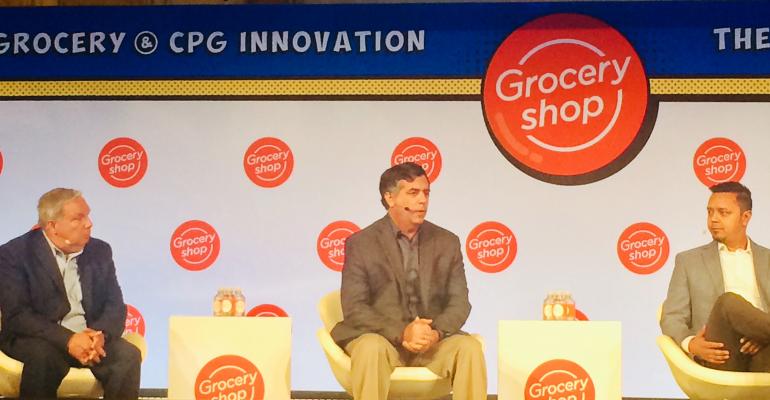While much of the buzz around Groceryshop here in Las Vegas has been about cool technology, from robots to A.I. and machine learning, almost everyone agrees the one thing every retailer is looking for is data.
“Data is the fuel powering retail,” announced Gary Hawkins, founder and CEO, Center for Advancing Retail and Technology (CART), at the opening of the panel discussion on data-driven shopping experiences. “While retailers are chasing every bright, shiny object, the real question is how can we bring some order to the chaos of all the tech innovation?”
“The personalization and relevancy we have come to take for granted in the digital world is rapidly manifesting in the physical word,” he continued. “The world is becoming tailored to each of us individually.” And savvy retailers are using their troves of customer data to tailor and personalize marketing to each individual shopper.
“Retailers can now go to market one-to-one more effectively than using mass promotion,” said Hawkins. “The shift from a product focus to a customer focus begins with the questions you can answer about your customers: Do you know me? Do you provide me meaningful savings on products relevant to me? And, how do you help me find and discover the products I want to buy?”
Of course, the quality of the customer data that retailers are compiling is critical. As Anshuman Taneja, vice president, head of product, Peapod Digital Labs, Ahold Delhaize, noted, “Data is a double-edged sword. If there are inaccuracies in your data, that’s worse than having no data at all.”
At Peapod, Taneja said, “We take both a broad and deep look at our customers through data.” One of the challenges is the sheer volume of data points in grocery retail as compared to other retail channels. “We have hundreds of data points for each customer, unlike, say, electronics retailers who have just a handful.”
Ron Bonacci, vice president of marketing & advertising for Weis Markets, said his company focuses on the freshness and relevance of the data it collects. “I look at data as perishable,” he said. “It has a life cycle. Having the most current data is the only way to be relevant in your marketing to the consumer.”
At Brookshire Grocery, John D’Anna, executive vice president and chief strategic officer, noted that in addition to its own customer data, the retailer also takes into consideration huge amounts of data from CPG companies. “All of that needs to be synced,” he added, “which is a large undertaking.”
But in order to really understand the customer, the value of data can’t be underestimated.
As D’Anna said, “The industry is extremely competitive and overstored, so gaining that personal relevance to the customer is key.”
While Brookshire and many other traditional grocers have long histories of getting to know and being able to reach customers through loyalty programs, D’Anna noted that more retailers today are pulling customer data through their e-commerce efforts. For traditional retailers, that’s still a relatively small piece of their customer base, but in this competitive environment, “even small data is good data.”





